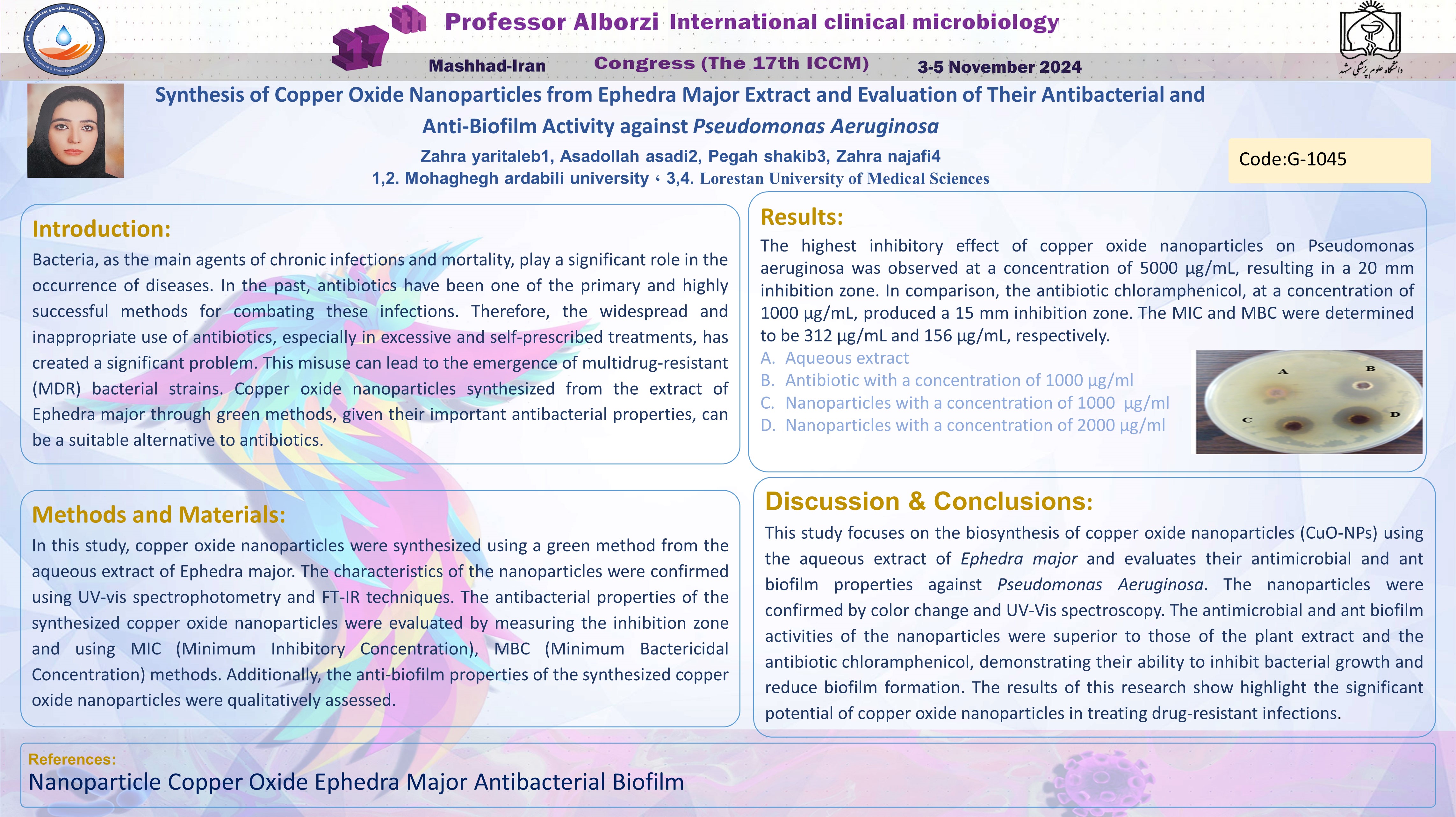سنتز نانوذرات اکسید مس از عصاره افدرا ماژور و ارزیابی فعالیت ضد باکتریایی و ضد بیوفیلم آنها در برابر سودوموناس آئروژینوزا
کد: G-1045
نویسندگان: زهرا یاری طالب ℗, اسدالله اسدی ©, پگاه شکیب, زهرا نجفی
زمان بندی: زمان بندی نشده!
دانلود: دانلود پوستر
خلاصه مقاله:
خلاصه مقاله
Introduction: Bacteria, as the main agents of chronic infections and mortality, play a significant role in the occurrence of diseases. In the past, antibiotics have been one of the primary and highly successful methods for combating these infections. Therefore, the widespread and inappropriate use of antibiotics, especially in excessive and self-prescribed treatments, has created a significant problem. This misuse can lead to the emergence of multidrug-resistant (MDR) bacterial strains. Copper oxide nanoparticles synthesized from the extract of Ephedra major through green methods, given their important antibacterial properties, can be a suitable alternative to antibiotics. Methods and Materials: In this study, copper oxide nanoparticles were synthesized using a green method from the aqueous extract of Ephedra major. The characteristics of the nanoparticles were confirmed using UV-vis spectrophotometry and FT-IR techniques. The antibacterial properties of the synthesized copper oxide nanoparticles were evaluated by measuring the inhibition zone and using MIC (Minimum Inhibitory Concentration), MBC (Minimum Bactericidal Concentration) methods. Additionally, the anti-biofilm properties of the synthesized copper oxide nanoparticles were qualitatively assessed. Results: The highest inhibitory effect of copper oxide nanoparticles on Pseudomonas Aeruginosa was observed at a concentration of 5000 µg/mL, resulting in a 20 mm inhibition zone. In comparison, the antibiotic chloramphenicol, at a concentration of 1000 µg/mL, produced a 15 mm inhibition zone. The MIC and MBC were determined to be 312 µg/mL and 156 µg/mL, respectively. Discussion & Conclusions: This study focuses on the biosynthesis of copper oxide nanoparticles (CuO-NPs) using the aqueous extract of Ephedra major and evaluates their antimicrobial and ant biofilm properties against Pseudomonas Aeruginosa. The nanoparticles were confirmed by color change and UV-Vis spectroscopy. The antimicrobial and ant biofilm activities of the nanoparticles were superior to those of the plant extract and the antibiotic chloramphenicol, demonstrating their ability to inhibit bacterial growth and reduce biofilm formation. The results of this research show highlight the significant potential of copper oxide nanoparticles in treating drug-resistant infections.
کلمات کلیدی
Nanoparticle _Copper Oxide _Ephedra major _Antibacterial_Biofilm
